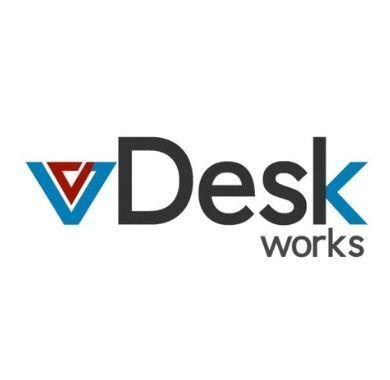We’ve talked about the evolution of technology, from manual labor to cutting-edge digital tools. But what about our most beloved tool for work—the desktop computer? There’s no denying it: the traditional desktop has been a fixture in the office for decades and is one of the staples of modern business operations.
3 Things Wrong in the Traditional Desktop Setup
- Expensive – It’s no secret that traditional desktops come with a hefty price tag. Not only do you need to purchase the physical computer, but also additional hardware and software for it to function properly. Additionally, you’ll need to factor in its maintenance costs.
- Rigid – One of the biggest drawbacks of traditional desktop computers is that they are inflexible when it comes to use cases. You’re limited in terms of what applications can be installed or how workflows can be automated—not ideal for today’s digital workplace!
- Unsecure – The security risks associated with traditional desktops are all too real: from malware and viruses to data breaches and cyber-attacks, these risks can have serious ramifications for your business.
However, with recent technological advancements, many businesses have begun to rethink this trusted system. The cloud-based virtual desktop is quickly emerging as the go-to choice for improved productivity and efficiency. Let’s first understand what a cloud desktop is, and why it’s becoming increasingly popular in the digital era.
Cloud Desktop: Explained
A cloud desktop, or virtual desktop infrastructure (VDI), is a type of computer system that relies on remote servers hosted on the Internet instead of local machines. It allows users to access all their data and applications from any device with an internet connection. This eliminates the need for software installation and hardware maintenance, saving time and money in the long run. Furthermore, since the data is stored in the cloud, users can work from anywhere at anytime—allowing for increased collaboration across remote teams and improved efficiency overall.
Finally, by leveraging cloud technology, businesses are better equipped to handle unexpected usage spikes without experiencing any downtime. As demand increases or decreases, the cloud desktop is able to quickly scale up or down depending on the situation.
Why Cloud Desktops Are the Next Best Thing?
The benefits of a cloud desktop are plentiful. For starters, here are the top 8 advantages of cloud desktops:
1. Increased productivity and efficiency:
Now this is one of the most obvious benefits. With a cloud desktop, employees have the freedom to work from anywhere and access all their files, data, and applications from any device with an internet connection—allowing them to get more done in less time.
2. Cost savings:
The cost of maintaining hardware for traditional computers (such as PCs) can be quite expensive over time. But with cloud desktops, businesses no longer have to worry about hardware costs or maintenance expenses—saving a significant amount of money in the long run.
3. Enhanced security:
Cloud-based desktops provide heightened data security since all information is stored remotely on the cloud provider’s server instead of local machines—which are susceptible to theft or hacking.
4. Automated software updates:
When using cloud desktops, there’s no need to manually update software or install new applications—all of which can be done automatically. This reduces the risk of data breaches and ensures that all applications are up-to-date with the latest security patches.
5. Improved collaboration:
Cloud desktops make it easier for remote teams to collaborate and share data—regardless of their geographic location. This improves overall communication and team morale, as everyone can work together seamlessly.
6. Enhanced scalability:
Unlike traditional computers, cloud-based desktops can quickly scale up or down depending on the current demand. This ensures optimal performance regardless of usage spikes or drops in traffic.
7. Seamless integration:
Cloud desktops are compatible with many popular software applications, making them easy to integrate into existing business processes. This means you don’t have to worry about investing in new hardware or software—saving time and money while transitioning into a cloud environment.
8. Improved mobility:
The ability to work from anywhere is one of the biggest advantages of cloud desktops—providing greater mobility and flexibility for remote workers. This helps businesses stay competitive in an increasingly digital world.
All in all, cloud-based virtual desktops are quickly becoming the go-to choice for businesses looking to increase productivity and efficiency while reducing costs.
These benefits make a strong case for why businesses should consider investing in the cloud desktop solution – it’s the next best thing to having a physical desktop computer in terms of efficiency, cost-savings, scalability, convenience, security, etc., but with much fewer risks associated with it! By leveraging the power of virtual machines running on remote servers, businesses are better prepared for the digital era ahead.
The Digital Era is Going Cloud-Based
The digital era is here, and the cloud desktop is paving the way. From remote teams to improved productivity, this new technology offers businesses an unprecedented level of efficiency and convenience while reducing costs.
With so many advantages associated with it, it’s no wonder why businesses are increasingly turning to cloud desktops to stay competitive in today’s market. Investing in a virtual desktop solution has never been easier—and could be the key to success for any organization.
Are you ready to take the plunge and make the switch to cloud desktops? Start exploring our offerings today – we guarantee it will be a worthwhile investment!




